Early Women Scientists of NIH, Part 1
This month we’ll be looking at lesser-known early women scientists at the National Institutes of Health. They did solid work and were leaders in their field, but for some reason, they aren’t well-known.
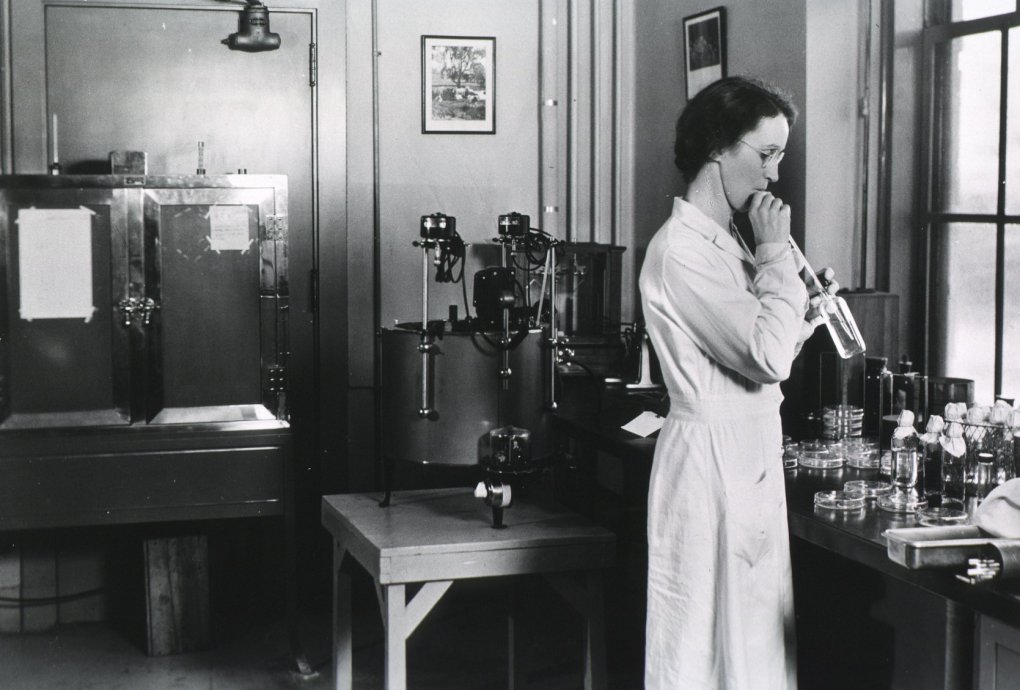
The scientist perpetrating this unsafe act of mouth pipetting is Dr. Adah Elizabeth Verder. Trained in the bacteriological methods of the time (1938), Verder spent her career at NIH from 1936-1962 studying gastrointestinal flora and staphylococci and training NIH staff in bacteriological methods. In 1962, she became chief of the Bacteriology and Mycology Branch of the NIAID Extramural program. She retired in 1970, apparently no worse from the practice which would get her banned from a lab today.
Verder received her PhD from the University of Chicago under Dr. Sarah Branham, where she then taught for three years. She came to NIH in 1936, and worked with Dr. Alice Evans. Verder is known for characterizing different strains of staphylococcus, particularly those resistant to antibiotics. Learn more about her on page 2 of the July 21, 1970, issue of the NIH Record.
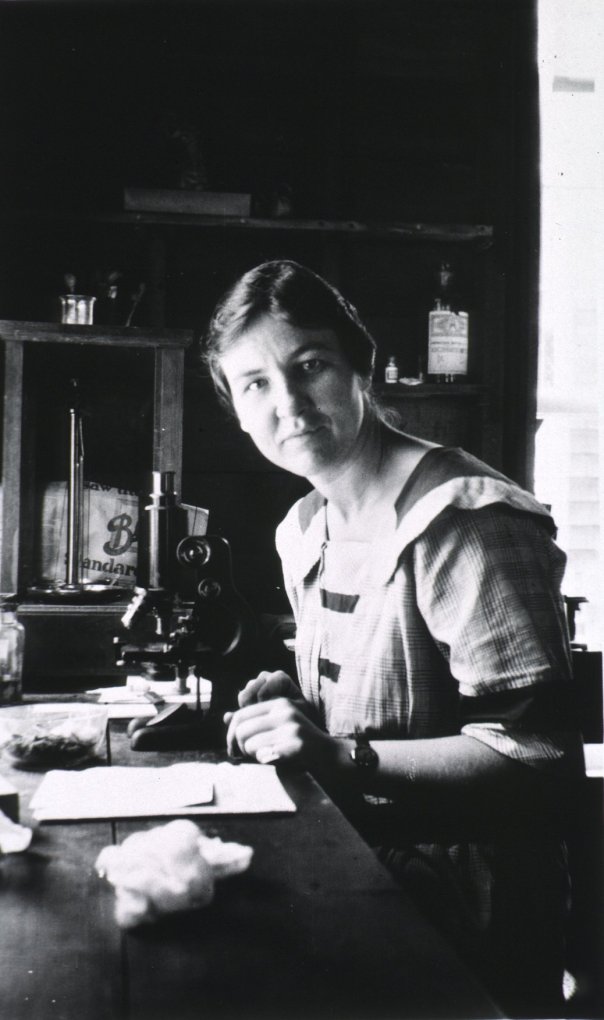
Evelyn Butler Tilden poses with the one constant in her life—a microscope. We think it’s the same one in our museum collection from the National Institute of Health’s Division of Chemistry.
While working with Dr. Hideyo Noguchi at the Rockefeller Institute as his editor, Tilden (b. 1891- d. 1983) quickly also became a laboratory technician and developed a staining technique for the routine diagnosis of syphilis in 1922. She also worked with Noguchi on trachoma, finding that Bacterium granulosis was still a potent infector after a year or more of dormancy. When Noguchi died in 1928, Tilden helped finish his work showing that Oroya fever and verruga peruviana are the same disease. While in Noguchi’s laboratory, she earned her PhD from Columbia.
After teaching at Colorado State University, Tilden joined the NIH Division of Chemistry in 1937, discovering how to prepare rare sugars from avocados for carbohydrate research. In 1942 she left to become a professor at the Northwestern University Dental School, where she was funded by NIH for work on bacteria in saliva. Tilden reinvented herself again in 1954, when she became head of the laboratories of Chicago’s Brookfield Zoo, where she remained as emeritus after her retirement.
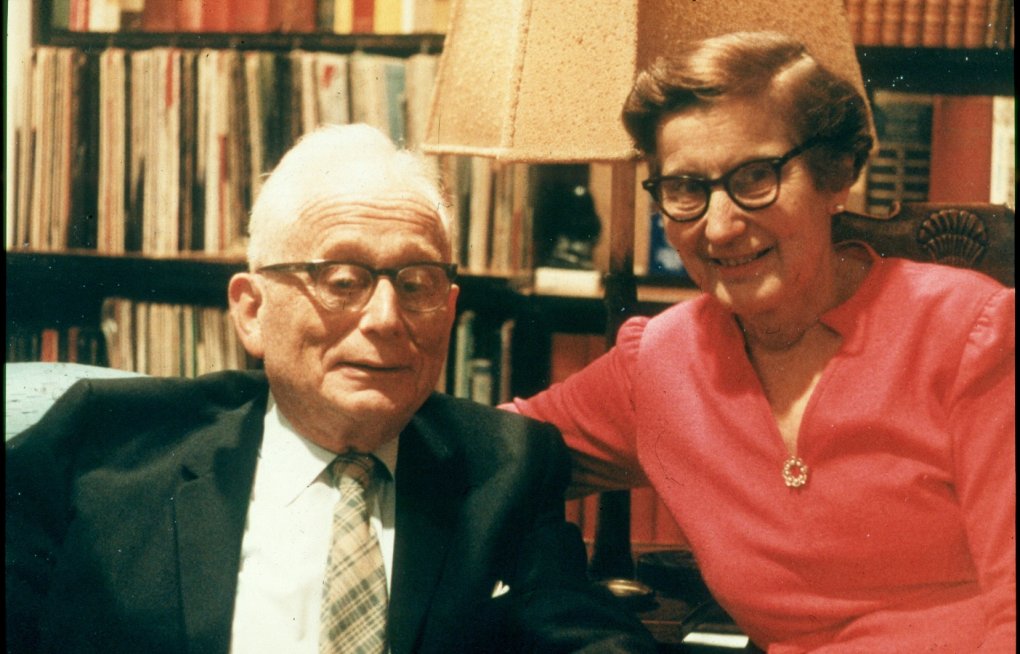
“This is so much fun. It’s amazing they pay us to do this,” said Dr. Marjorie Roloff Stetten about her research on carbohydrate metabolism. Stetten worked at NIH during two periods of her life, split by a stint at Rutgers. With her husband DeWitt Stetten, Jr. (yes, our museum namesake) she studied the metabolism of glycogen for which he got the Banting Medal from the American Diabetes Association 1957. Photo courtesy of Dr. Victoria Harden.
Trying to be sensitive to women, the NIH Record had this to say upon her death in 1983: “Dr. Stetten, despite her chronological age, was truly a woman of the times, combining four different careers successfully. She was the wife and confident of DeWitt Stetten, Jr., the mother of a family of achievers and grandmother of five, a scientist noted for her fundamental contributions to the field of biochemistry, and a member of the executive committee and board of trustees of the Marine Biological Laboratory of Woods Hole, Mass.”
Read more about Roloff Stetten in her husband’s memoir How My Light is Spent and search for “Marney.”
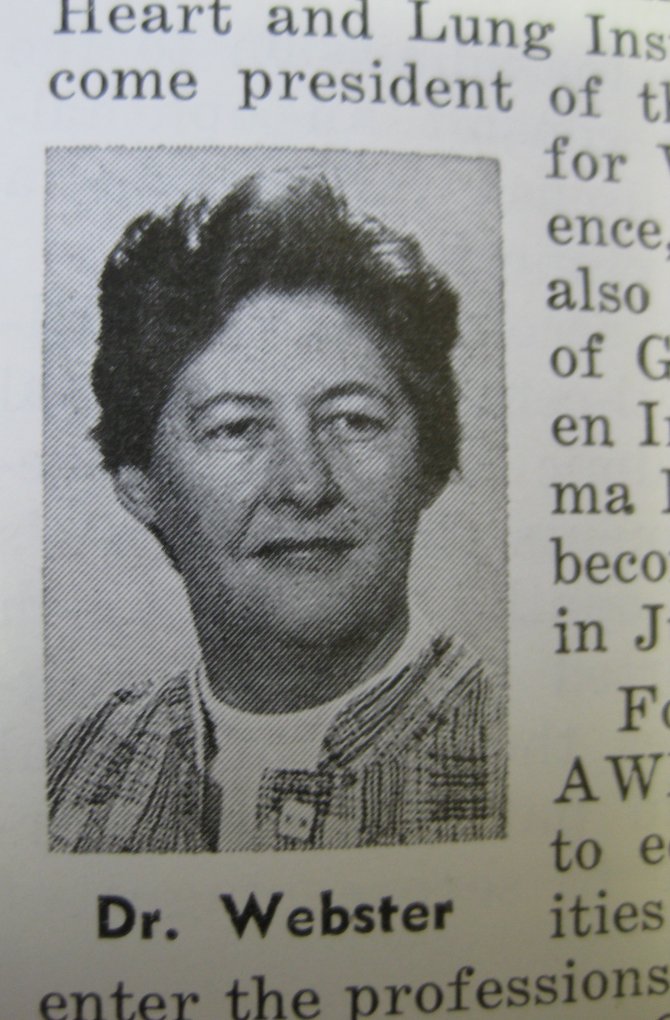
Dr. Marion Webster believed in helping other women develop their careers, so she served as president of the Association for Women in Science and Graduate Women in Science. After graduating from Florida State University, Webster had been on a team of scientists at the Department of Agriculture who developed DDT as an insecticide. She then joined the Walter Reed Army Institute of Research, and got her Ph.D. at Georgetown University.
Webster was the first to isolate the Vi Antigen of typhoid and to determine its structure. Joining NIH’s National Heart, Lung, and Blood Institute (NHLBI) in 1958, Webster published extensively on the kallikrein-kinin enzyme system. Read her article on it.
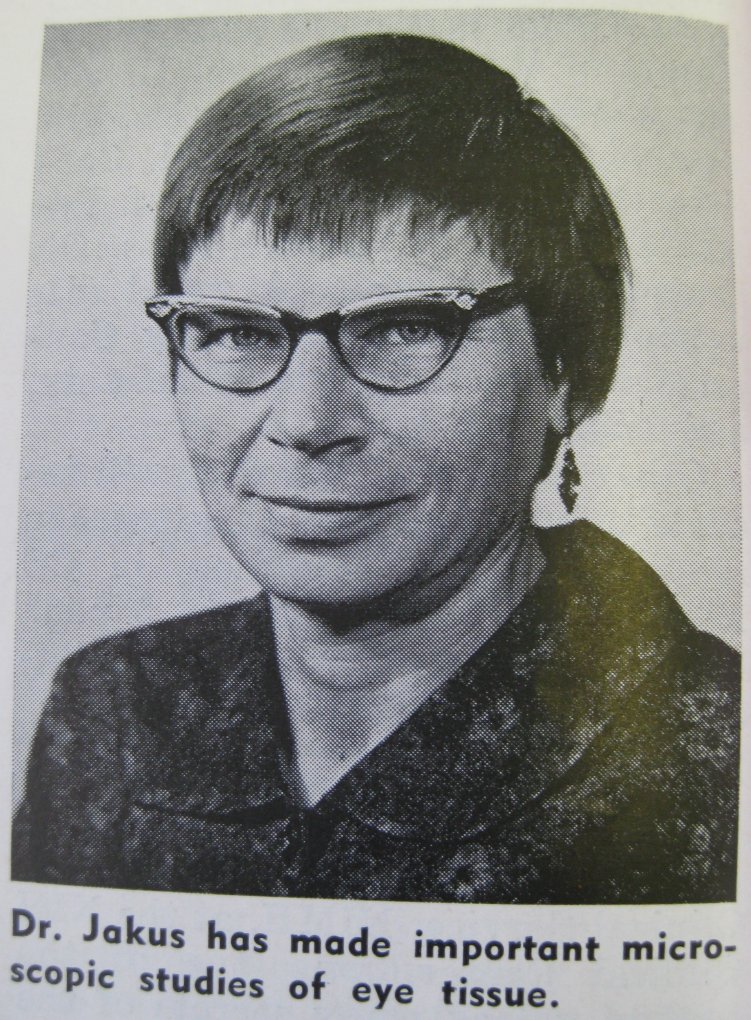
Whitewater rafting was Dr. Marie Jakus’ recreation of choice. When she wasn’t shooting the rapids, she was one of the first to use an electron microscope to define the fine structure of eye tissues, work she did at the Retina Foundation in 1951. She had received her PhD from MIT in 1945. In 1961, she joined the NIH’s National Institute of Neurological Diseases and Blindness (NINDB) and then the NIH Center for Scientific Review as executive secretary in the Visual Sciences Study Section to review, analyze, evaluate, and process research grant applications. She retired in 1977. Learn more about her on page 8 of the October 17, 1967, issue of the NIH Record.
Related Blog Posts
This page was last updated on Monday, January 29, 2024
